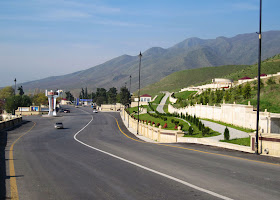Beylagan (also, Beyləqan, Beyläqan, Bejlagan, Beilagan, Jdanov, Zhdanov, Ždanovsk, and Zhdanovsk) (Urdu: بیلقان)is the capital city of Beylagan rayon of Azerbaijan. During the Soviet era, it was renamed Zhdanov (Жданов) after Stalinist politician Andrei Zhdanov. This move was reverted in 1991 when the city assumed its original name again. Beylagan is one of the oldest towns in Azerbaijan. It is located in the triangle between the Kura and Aras rivers in the Mil steppe.
Etymology:
The 5th century Armenian historian Moses of Chorene states name Baylakan that came from another old Armenian name Փայտակարան (P'aytakaran) that is mean: wood made. Second sources say that this name is from the Persian name Payda-gharan (پایداقاران), that its meaning is not clear, but "-an" in the last section means "place of " in Persian. Third group of historians believe that name Beylagan derived from the name of a Kurdish tribe Belikân that lived in Savalan mountains of Persian Azerbaijan (Atrpatakan) in the early centuries.
History:
Some historians say that Beylagan is to have been founded by the Sassanid emperor Qobad and it may have been built during the time of Iranian migration and colonization of the region. In pre-Islamic times the city was known as Paytakaran. During the sixth century 'Paidangaran' (as its name is recorded in Syriac) was a diocese of the Assyrian Church of the East, two of whose bishops are known. The city surrendered peacefully to the Arabs and a period of Islamisation ensued, in which the city of Paytakaran became known as Baylaqan. Muslim chronicles describe it as a flourishing city. In the 10th and 11th centuries, the city was under the control of the Kurdish rulers of Arran, the Shaddadids, although it was also coveted by the Yazidis of Shirvanshah. In the 12th century, the city had to pay tribute to Georgia and was sacked in 1220 by the Mongols, who slaughtered the inhabitants and burned it down. However, survivors subsequently returned and rebuilt it. At the end of the 14th century it was destroyed by Timur, who later rebuilt it, but the city was abandoned. Its ruins are now known as Oren-kala and lie near Kabirli village, a 22 km drive from the modern city of Beylagan.
































































































































